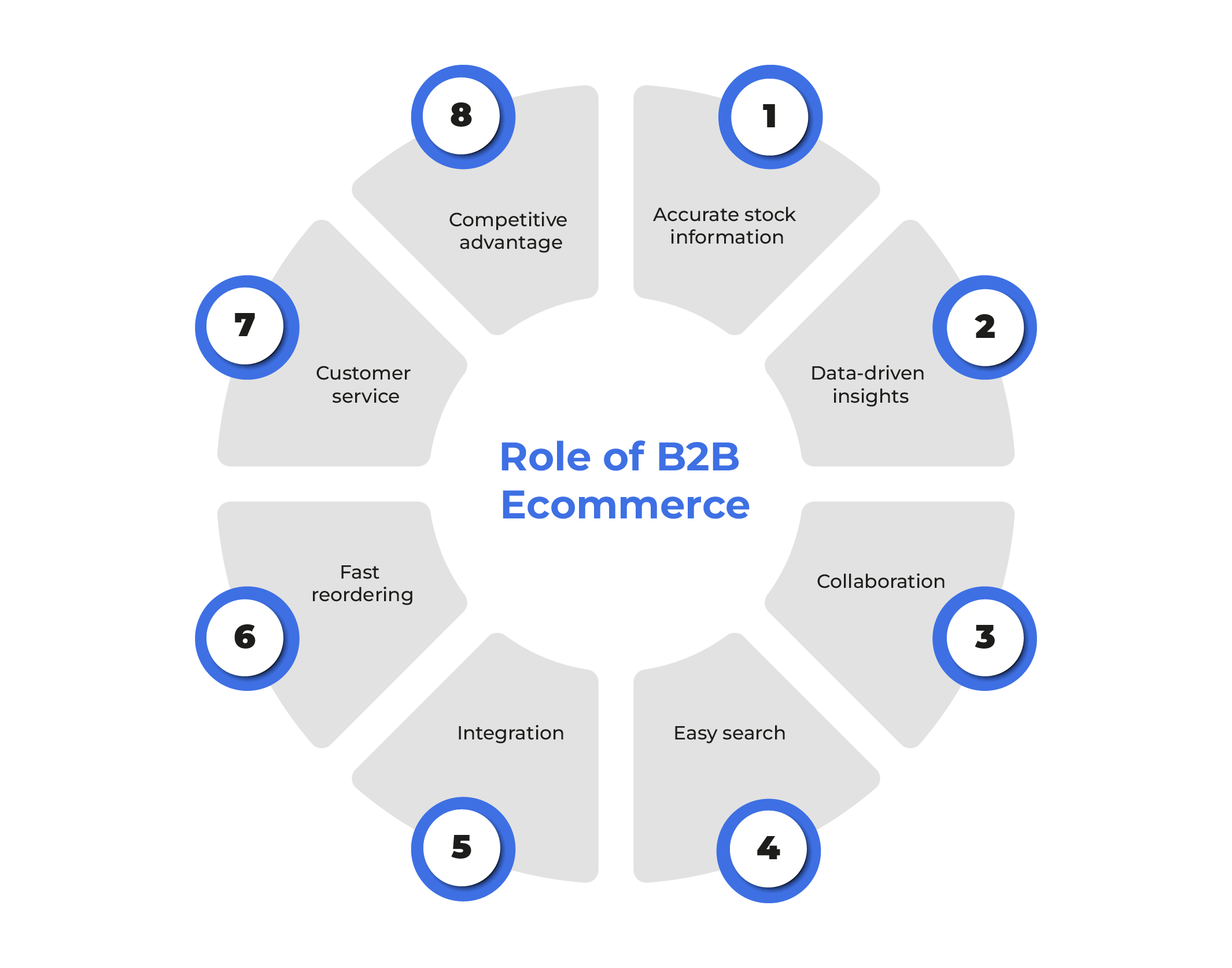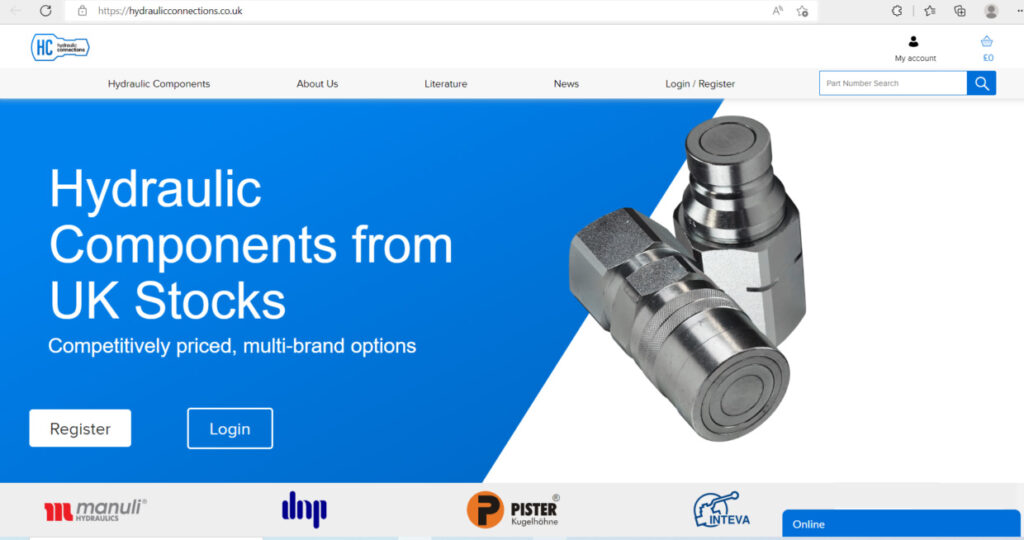Like many other market sectors, pipe, valve, and fittings (PVF) suppliers have not been able to send their sales teams into the field as frequently during the pandemic.
Companies that turned to ecommerce found up to half of their clients willingly used ecommerce channels and they are now planning to continue their digital transformation.
By leveraging B2B ecommerce platforms, businesses in the PVF industry can streamline their procurement processes, access a broader range of suppliers and products, compare prices and specifications, and place orders conveniently online.
B2B ecommerce has become increasingly popular as it offers efficiency, cost savings, and convenience for businesses in sourcing their PVF needs.
Table of Contents
PVF market overview
The global industrial PVF market was estimated to be around US$ 65.9 billion in 2020 and is expected to grow at a compound annual growth rate (CAGR) of 4% to 5%, at least until 2024.
Distributors are increasing their global footprint through mergers and acquisitions to reach emerging and maturing markets although the picture is still quite fragmented.
As shale gas production recovers in North America the market for oil-country tubular goods (OCTG), capable of handling greater tension, compression, and torsion will increase. The growing oil and gas industry in Australia is also boosting the demand for PVF products. Smart valves to replace manual valves will also drive the market in developed regions where increased demand for seamless pipe production continues.
In developed countries rapid urbanization, increasing disposable income, rising private and public investment, and increases in government rebuilding initiatives mean water supply and sewerage treatment projects are increasing where large-scale pipework will be needed.
Environmental, health, and safety regulations, such as requirements for smog-producing volatile organic compounds (VOCs), mean many end-user industries will need to upgrade to improved PVFs.
However, shortages of raw materials, which account for some 65% to 70% of the total cost, are affecting pricing and production. Skills and labor shortages are also likely to affect market performance in the near future.
While the global market is still quite traditional, with many customers working only with their preferred suppliers on a cost-plus or fixed price basis, the sector remains both inventory and price sensitive. However, things are changing as digital technology like 3D printing has an impact. International sales and purchasing will also play an increasingly important role in the sector.
The role of B2B ecommerce for PVF suppliers
Accurate stock information
Most PVF customers need timely delivery of products, parts and replacements, especially for maintenance. Real-time information about their suppliers’ inventory levels is therefore a key consideration that can be addressed with an effective ecommerce solution. Providing a single point of contact via a B2B ecommerce software will provide a competitive advantage and help to build customer loyalty.
Data-driven insights
B2B ecommerce platforms provide suppliers with valuable data and analytics. Suppliers can track customer behavior, purchasing patterns, and preferences, enabling them to make data-driven decisions to optimize their product offerings, pricing, and marketing strategies.
Collaboration
With the current material shortages and production challenges many PVF suppliers are turning to partnerships to help them meet their customers’ requirements. Collaborations can range from working with a master distributor as the intermediary between manufacturers and smaller distributors to shared inventory amongst collaborative groups of distributors or industry-specific online B2B marketplaces.
Orders are increasingly likely to be placed online so stock control and visibility will become priorities, along with the ability to create tailored product bundles and pricing via a product builder tool. Using a bespoke quote workflow to make sure you have the most up-to-date pricing from manufacturers before passing information along to your customers will be important in this fast-changing environment.
Easy search
You can make it very easy for customers to find what they’re looking for with intuitive navigation and intelligent on-site search options. Part numbers can be cross-referenced, alongside product and manufacturer names and stockkeeping units (SKUs).
By adopting B2B e-commerce, PVF suppliers can reach a broader customer base. Online platforms allow suppliers to showcase their products and services to potential buyers worldwide, transcending geographical limitations. This expanded reach opens up new business opportunities and increases the chances of securing more customers.
Integration

By integrating your ecommerce platform with your enterprise resource planning (ERP) system and other key business processes like product information management, warehouse management, and third party logistics you can give customers confidence to make their purchases based on accurate product details, stock levels and delivery schedules.
Digital integration creates efficiencies for both you and your customers, strengthening relationships and creating opportunities to provide other value-added offerings like back in stock alerts.
B2B ecommerce platforms enable PVF suppliers to integrate their digital marketing efforts seamlessly. They can leverage online marketing channels such as search engine optimization (SEO), pay-per-click (PPC) advertising, and email marketing to drive traffic to their e-commerce platforms, increasing brand visibility and generating leads.
Fast reordering
Orders can be placed quickly and securely online with tailored pricing, purchase orders, call off orders, credit agreements and digital invoicing. When customers are ready to reorder, a simple login process will give them access previous purchases, favorites lists and credit agreements.
B2B ecommerce platforms provide PVF suppliers with efficient tools for managing orders, inventory, and fulfillment processes. These platforms often integrate with suppliers’ existing enterprise resource planning (ERP) systems, enabling seamless order processing, inventory management, and real-time tracking.
Customer service
When you integrate your key business systems all your teams from sales and warehousing to marketing and customer service can share a single source of information, so they can respond quickly and confidently to your customers’ needs online, via chatbots, email or phone.
With continuing challenges for field sales teams, they can repurpose their skills and expertise to be reliable and trusted advisors for existing and new customers. When they are in the field Cloudfy’s mobile customer ordering app gives them the ability to check inventory and place the order wherever they are working.
Competitive advantage
Early adopters of B2B e-commerce in the PVF industry gain a competitive edge by providing customers with a modern, efficient buying experience. Suppliers who embrace technology and offer online purchasing options are more likely to attract and retain customers compared to those who rely solely on traditional offline sales channels.
Despite the many benefits, the adoption of B2B ecommerce among PVF suppliers may vary. Factors such as the size of the supplier, industry norms, technological readiness, and customer preferences can influence the pace of adoption. However, as the digital landscape continues to evolve, it is expected that more PVF suppliers will recognize the advantages of B2B e-commerce and embrace online platforms to drive growth and competitiveness in their industry.
Case study
Cloudfy’s B2B ecommerce automation solution transformed Hydraulic Connections (H.C.), a supplier of hydraulic fittings, by revolutionizing their website and customer service. Prior to Cloudfy, H.C. relied on slow and error-prone email and phone orders. With Cloudfy’s feature-rich platform, H.C. implemented a hybrid checkout system, serving both trade-only clients and end-consumers.

The webstore provided inventory visibility, enabling customers to anticipate restocking timeframes. Critical product information became easily accessible, reducing administrative overhead. Integration with Sage 200 ERP streamlined processes, while multi-select attribute filtering empowered customers to swiftly submit orders. Cloudfy’s comprehensive solution enabled H.C. to automate and optimize their quote-to-cash process, significantly improving efficiency and increasing sales from both B2B and D2C customers.
Rely on an ecommerce solution designed for B2B markets
Cloudfy’s out-of-the-box B2B features can help to streamline the ordering process, access up-to-date stock information, improve customer satisfaction, and save time and money.
Discover the power of Cloudfy for your PVF distribution company. Book your free demonstration today.
B2B ecommerce offers several benefits to PVF) suppliers in streamlining their procurement processes such as:
- Efficient Order Processing
- Enhanced Inventory Management
- Streamlined Procurement
- Improved Customer Service
- Expanded Market Reach
- Data Analytics and Insights
- Customer Segmentation
- Personalized Product Recommendations
- Demand Forecasting
- Pricing Optimization
- Streamlined Supply Chain Management
- Customer Relationship Management (CRM)
- Analytics and Reporting
Collaboration plays a vital role in the PVF industry's adoption of B2B e-commerce by enabling:
- Supply chain integration
- System interoperability
- Establishment of standards
- Platform development
- Trust building
- Market education
These collaborative efforts contribute to the growth, efficiency, and competitiveness of the PVF industry in the digital age.






